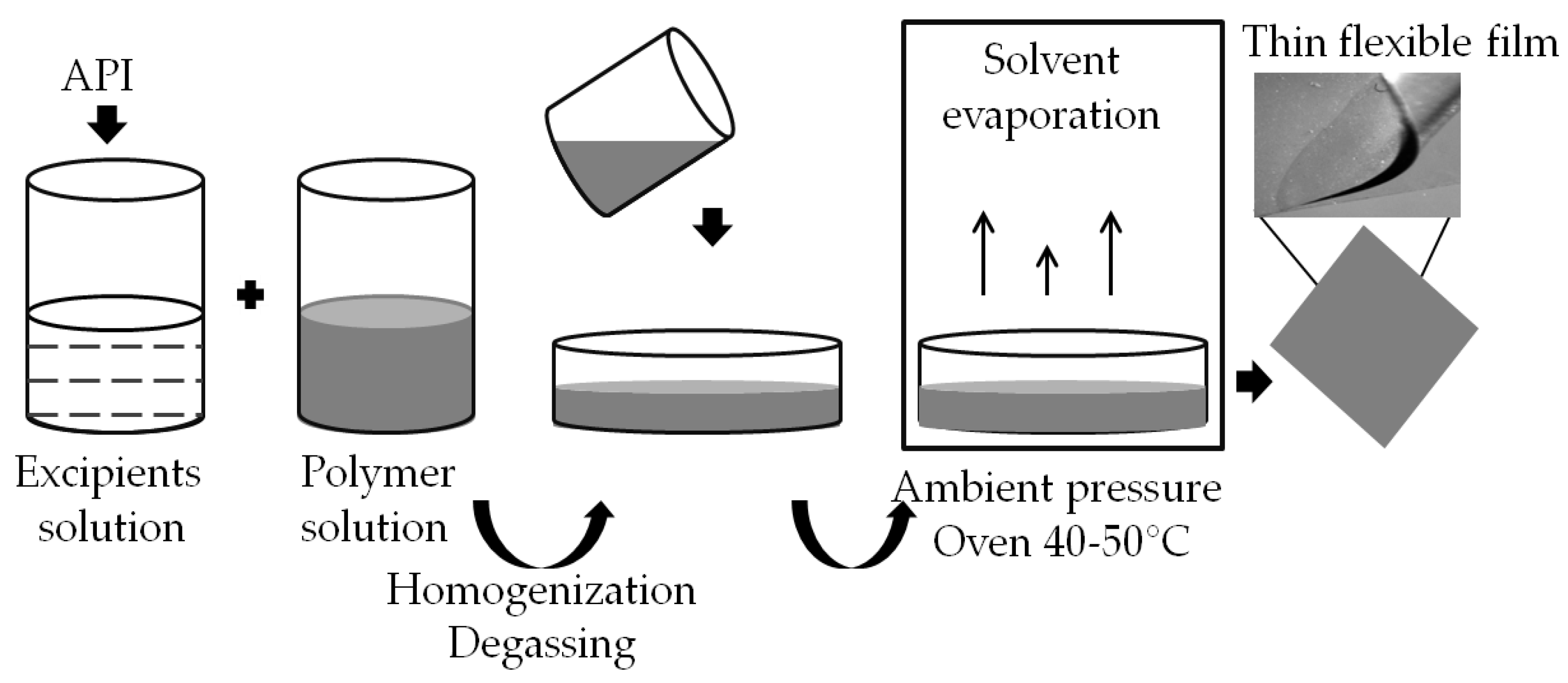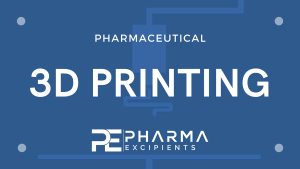Technological Aspects and Evaluation Methods for Polymer Matrices as Dental Drug Carriers

he development of polymer matrices as dental drug carriers takes into account the following technological aspects of the developed formulations: the composition and the technology used to manufacture them, which affect the properties of the carriers, as well as the testing methods for assessing their behavior at application sites. The first part of this paper characterizes the methods for fabricating dental drug carriers, i.e., the solvent-casting method (SCM), lyophilization method (LM), electrospinning (ES) and 3D printing (3DP), describing the selection of technological parameters and pointing out both the advantages of using the mentioned methods and their limitations. The second part of this paper describes testing methods to study the formulation properties, including their physical and chemical, pharmaceutical, biological and in vivo evaluation. Comprehensive in vitro evaluation of carrier properties permits optimization of formulation parameters to achieve prolonged retention time in the dynamic oral environment and is essential for explaining carrier behavior during clinical evaluation, consequently enabling the selection of the optimal formulation for oral application.
Introduction
When designing a drug formulation for use in dentistry, it is necessary to consider aspects of the application of the carrier in the oral cavity, which is a diverse area and includes the lips, cheeks, the dorsal and lower surface of the tongue, hard palate, soft palate, maxillary and mandibular alveolar processes (gums), and the floor of the mouth, covered by a mucous membrane that is constantly moistened and flushed with saliva [1]. When developing therapeutic formulations for topical application in the oral cavity, it is necessary to take into account the leaching of the drug carrier by saliva, the poor penetration of the drug into the tissue, the limited adhesion surface of the preparation, its taste, the possibility of accidental ingestion of the carrier, and the aforementioned specificity of the site of application, or the disease entity being treated, i.e., therapy for lesions involving more superficial layers of epithelium, e.g., therapy for pseudomembranous candidiasis, or therapy for lesions requiring deeper penetration of the substance, e.g., therapy for Wilson’s lichen and other mucocutaneous diseases [1,2,3,4,5,6,7]. In addition, there is the need for direct administration of the drug into periodontal pockets when supplemented mechanical therapy pocket cleaning is indicated [2]. Regardless of the type of carrier and the site of application in the oral cavity, dentists point to the desirable properties of the administered form of the drug, i.e., adhesion, moldability, adaptability to the application site (plasticity), resistance to smearing, modified release in the application site, penetration into tissue, ease of application including patient self-application, and biodegradability [2,3]. Answering an urgent dental clinical demand is the development of local drug-delivery carriers, i.e., different types of film, sponge, wafer, nanofiber and 3D-printed carriers that minimize systemic exposure to the drug [2,8,9,10,11,12,13,14,15,16,17] and limit potential adverse reactions [1,3,18,19]. Modern advances in the technology of drug formulations used for oral cavity application are primarily based on the use of macromolecular compounds, including those of natural origin, i.e., gelatin, sodium alginate, chitosan, xanthan gum and gellan gum; semi-synthetic polymers, i.e., cellulose derivatives; and synthetic polymers, i.e., polyvinyl alcohol, polyethylene oxide, polycaprolactone, polylactides, polyamides, acrylic acid polymers, etc. [9,20,21,22].
Table 6. Polymer matrices for dental topical applications produced by 3D printing.
| Type of Carrier/ API/ 3D Printing Method | Polymers/Excipients | Processing Parameters | Application/ Activity/ Indication |
|---|---|---|---|
| 3D-printed tooth caps with fluoride/FDM | PCL, PVA or PEG | 1/NaF-loaded (10 wt%) composite filaments 1.75 ± 0.15 mm were produced by hot-melt extrusion (HME) 2/PCL/PVA and PCL/PEG filaments produced using FMD (nozzle temperatures set at 145 and 100 °C, the bed heated at 40 and 30 °C, respectively) | Sustained localized release of fluoride from personalized 3D-printed mouthguards at the device–enamel interface can improve the incorporation of fluoride in the tooth matrix and prevent lesion progression |
| Catechin-based film/SSE | HPMC/mannitol, glycerol, ethanol/water, Tween 80 | 1/Preparation of hydrogel-based printer material/ink 2/Extrusion parameters: printer syringe—27 G nozzle, air pressure through pump—20–70 kPa, the printed hydrogel was dried at room temperature and stored in a desiccator (air drying—AD); alternatively, the hydrogel was frozen at −80 °C and freeze-dried using an FD1000 freeze-dryer (freeze-drying—FD) | Oral cavity, including aphthous stomatitis and oral mucositis ulcers, catechins are flavonoids, and polyphenols exhibit antioxidant, anti-inflammatory, anti-cancer and anti-hypertensive effects |
| Multilayer film containing an ibuprofen/lidocaine ionic liquid/pressure-assisted microsyringe (PAM) printing | HPMC supporting layer, mannitol, water/Eudragit polymer layer (L100, EPO or RSPO), acetone, active substances | 1/Preparation of hydrogel-based printer material/ink for Layer 1 Printing parameters of the 1st support layer: printer syringe—27 G nozzle, air pressure through pump—20–70 kPa, lyophilization at −80 °C 2/Preparation of printer material/ink for Layer 2 Printing parameters of Layer 2 applied to Layer 1: printing speed—10 mm/s; vertical shell 1, fill density—100%, multilayer film drying | Oral mucositis caused by radiation therapy and chemotherapy |
| Apigenin-loaded mucoadhesive oral film/SSE | HPMC, carbopol, poloxamer/ethanol | 1/Preparation of hydrogel-based printer material/ink 2/Extrusion parameters: printer syringe—27 G nozzle, air pressure through pump—90 kPa, the printed hydrogel was dried at room temperature | Oral leucoplakia, including on the tongue |
This review discusses the technological aspects of polymeric drug carriers and their evaluation methods. This paper outlines the main methods used to produce the aforementioned carriers, i.e., the solvent-casting method, lyophilization method, electrospinning and 3D printing. The preparation of carriers using each of these technologies requires choosing the formulation composition, including the type and amount of excipients, and selecting the process conditions for preparing the carrier. Depending on the type of carrier and the technology used to manufacture it, excipients are added during the preparation process, including the vehicles that make up the carrier structure, i.e., polymers and others; solvents; taste-masking agents; and plasticizers and cross-linking agents. When considering the choice of preparation method, the technologist analyzes the possibility of producing the intended carrier structure, the process steps and the choice of parameters affecting the stability of the active substances in the formulation and the properties of the final carrier. This review also highlights the limitations of the indicated technologies in obtaining feasible formulation types and offers examples of carriers derived using them. For a comprehensive evaluation of the formulations, a range of studies is required to describe the resulting carriers for dental applications in different areas of the oral cavity, with the identification of methods enabling their comprehensive evaluation, ensuring subsequent safety and therapeutic efficacy.
Download the full article as PDF here Technological Aspects and Evaluation Methods for Polymer Matrices as Dental Drug Carriers
or read it here
Excipients mentioned in the study beside others: Eudragit L100, Eudragit EPO, Xanthan gum, gelatine, PVA, Carbopol, Tween 80
Kida, D.; Konopka, T.; Jurczyszyn, K.; Karolewicz, B. Technological Aspects and Evaluation Methods for Polymer Matrices as Dental Drug Carriers. Biomedicines 2023, 11, 1274. https://doi.org/10.3390/biomedicines11051274
Read more on Overview of Pharmaceutical 3D printing here:


